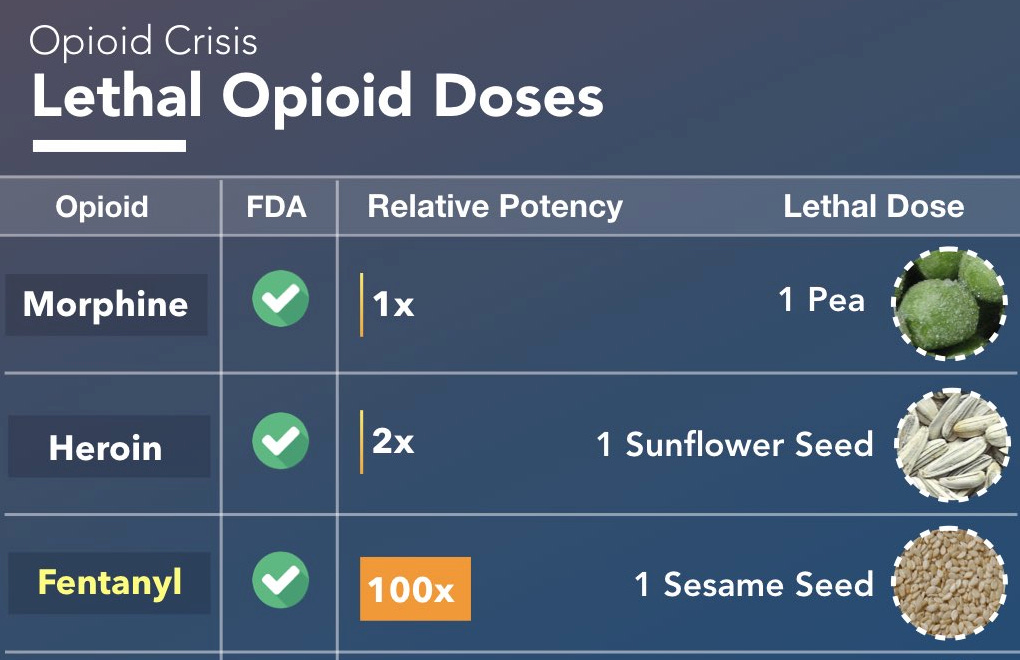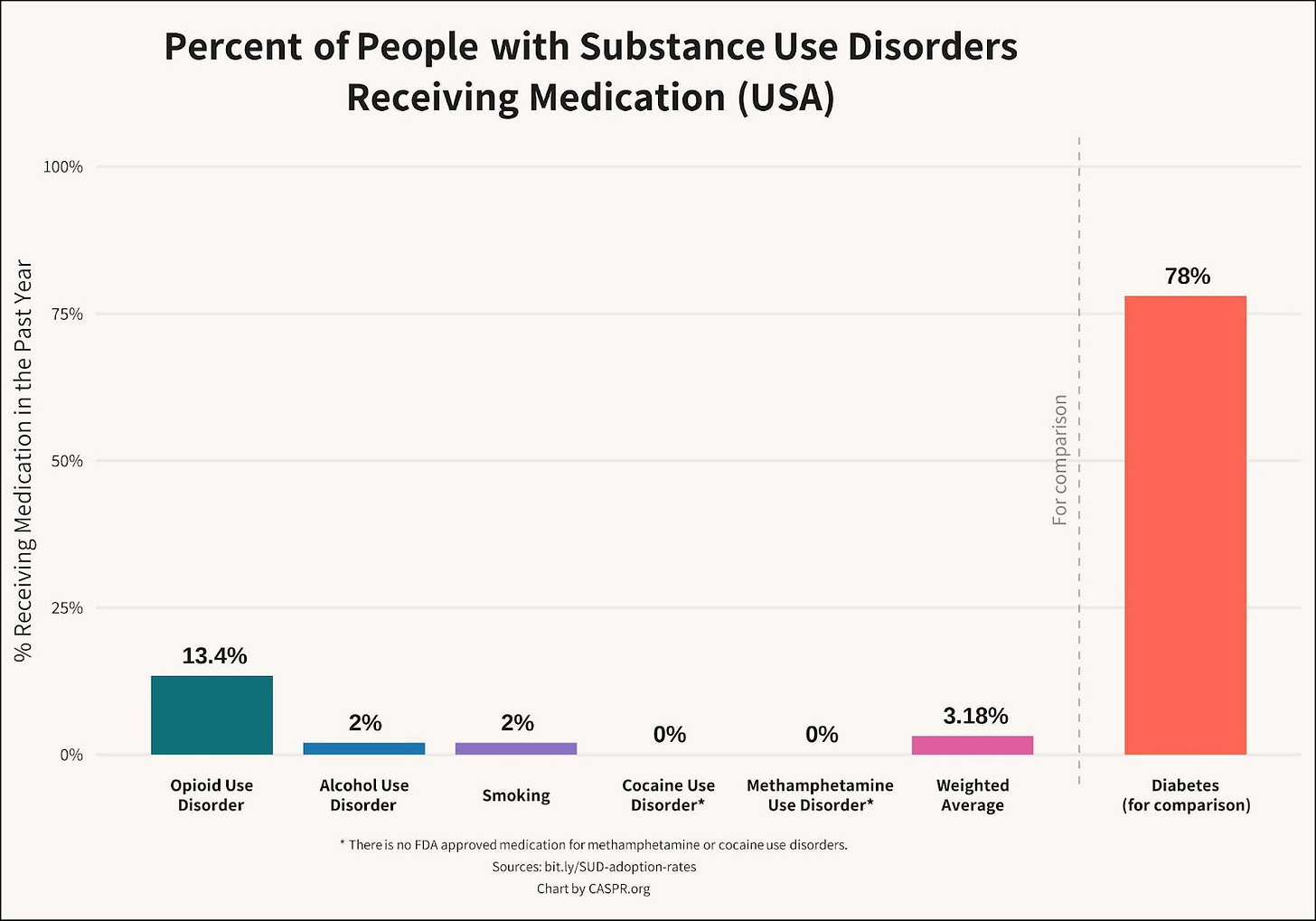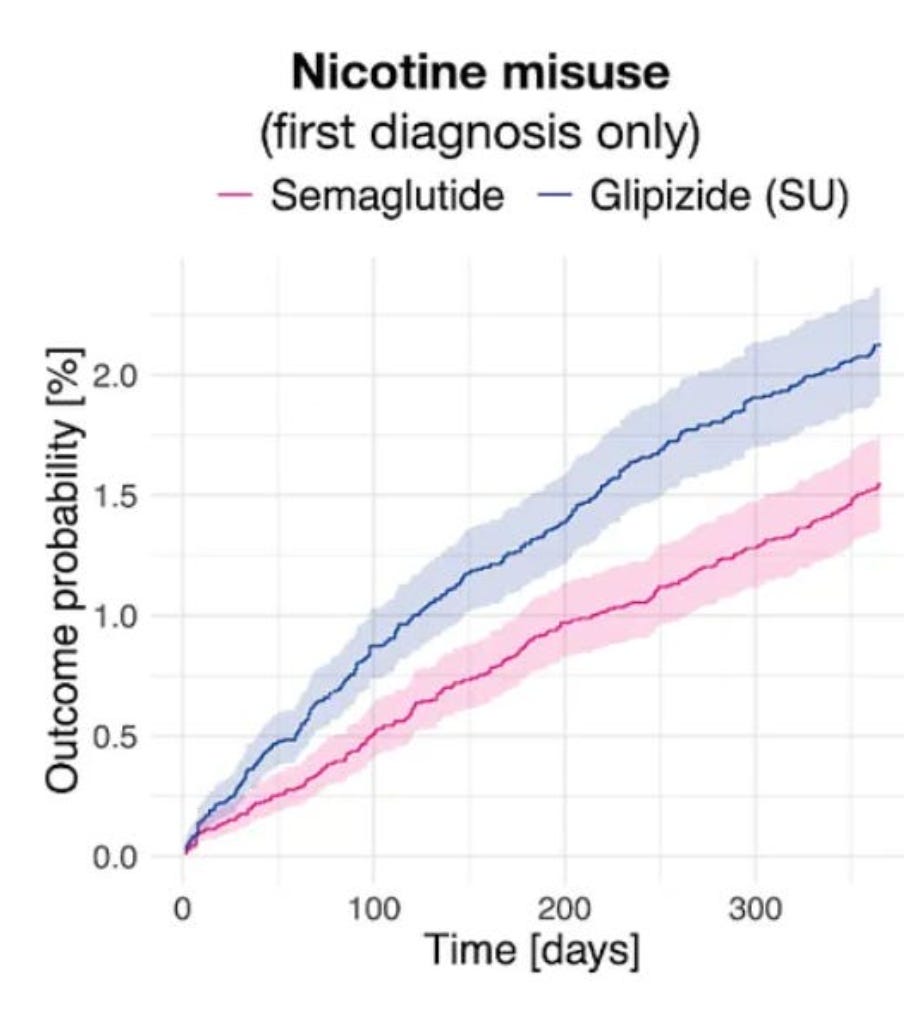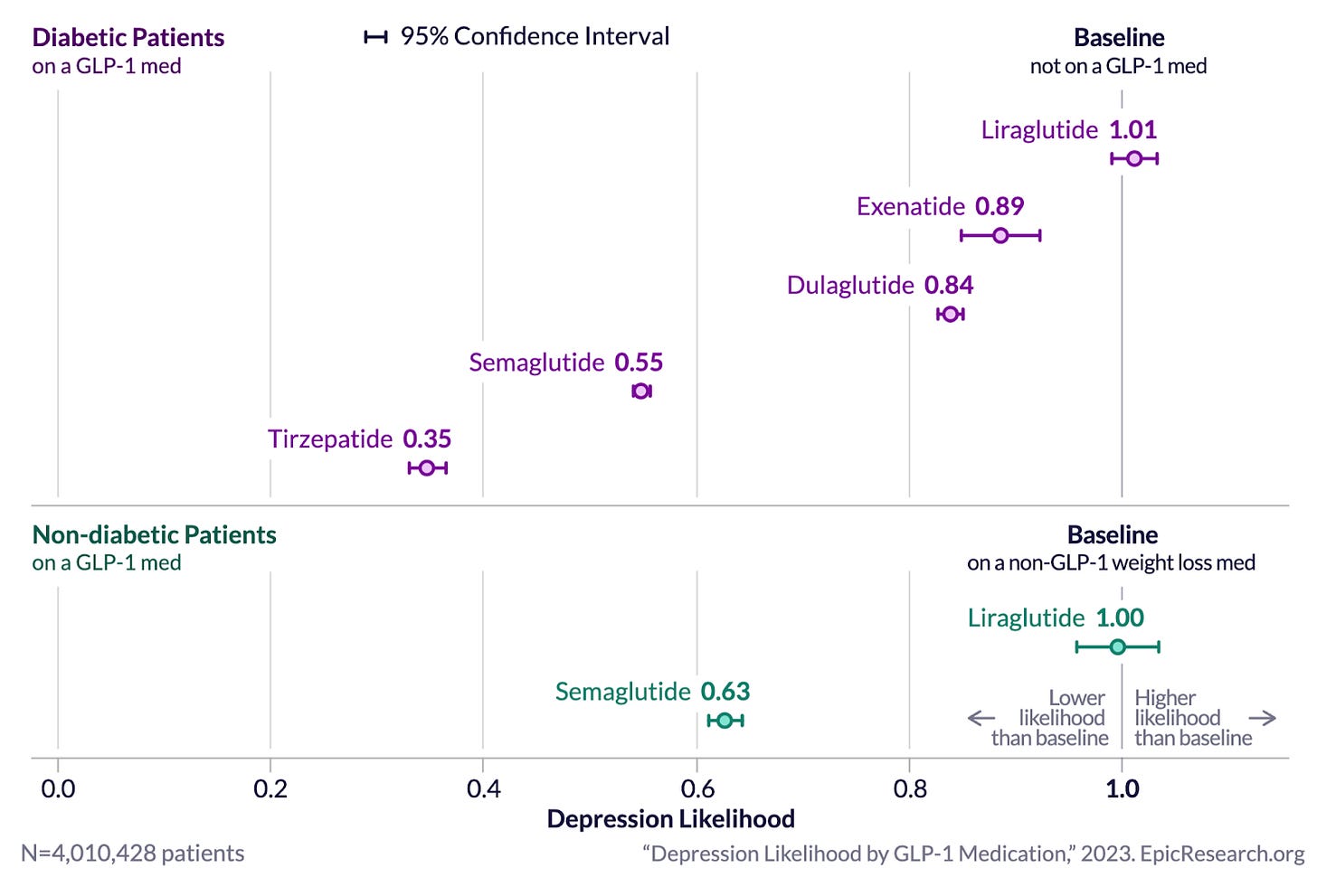10 charts about how and why we haven't solved addiction (and how we can)
Plus the GLP-1 breakthrough that can change our course.
This is a story, told in charts, of why we have an overdose crisis and why addiction to nicotine, alcohol, stimulants, and opioids remains unsolved, despite scientific and medical opportunity. It’s also a story of the emerging opportunity for GLP-1s like Ozempic to reduce addiction permanently, at a population level. I’ll let the charts do (most of) the talking.
Part 1: Innovations in Addictive Drugs
Innovation in addiction has been happening in the wrong direction— opioids and stimulants have been getting cheaper and stronger.
Fentanyl is 25-50X Stronger than Heroin
Fentanyl is dramatically stronger than heroin, making it cheaper, far easier to smuggle, and far more likely to cause fatal overdoses. You can fit 8,000 doses of fentanyl inside a golf ball.
Cheaper and Stronger Methamphetamine
Methamphetamine prices have rapidly fallen as strength has increased, due to breakthroughs in production techniques in Mexican meth labs.
The Rise of Fentanyl + Stimulants
Fentanyl’s rise has almost completely replaced heroin. One of the most dangerous innovations is that, unlike heroin, fentanyl is easily combined with stimulants in powders and pills. The purple area above shows how deadly this new combination is.
Part 2: A Lack of Innovation in Addiction Medicine
Meanwhile, there have been no significant FDA approvals of addiction medicines in over 20 years. Despite tremendous scientific and medical opportunities, large pharma companies actively avoid working in the field of addiction due to risk of reputational harm.
Existing Medicines for Addiction are Unpopular
Very few people with substance use disorders take existing medications to treat addiction due to a lack of medicines that are both appealing, accessible, and effective.
Almost No One is Investing in New Medications for Addiction
“Venture investment into companies with novel addiction drug programs over the last 10 years is estimated at $130M, 270 times less than oncology.”
No Pharma Programs = No New Medicines
Despite the massive burden of death and disability caused by addiction, there is only a trickle of FDA approvals, and they are mostly reformulations of existing medicines. Addiction can be solved medically, but not until we make a serious effort as a society to develop a robust pipeline of novel medications.
Part 3: GLP-1s Are a Breakthrough That Could Change Everything
Almost by chance, GLP-1 medications like Ozempic and Mounjaro, invented to diabetes, appear to be the biggest breakthrough in addiction medicine in decades. Here’s our review of the science, a powerful patient story, and doctors who are prescribing GLP-1s for addiction.
Animal Studies First Revealed Addiction Reduction
Semaglutide (Sem) is Ozempic— it reduces how much alcohol rats drink by more than half. Animal studies gave the first strong evidence of reductions in craving and consumption in addiction.
GLP-1s Reduce Smoking in Humans
People who take semaglutide vs other diabetes drugs are about 30% less likely to become addicted to nicotine. This is a positive and unintended side effect.
GLP-1s Reduce Alcohol and Opioid Use
People who take Ozempic or Wegovy (semaglutide) for diabetes or obesity are far less likely to develop an alcohol use disorder.
People who take Ozempic vs other diabetes drugs are more than 50% less likely to have an opioid overdose. Cannabis use is reduced as well. RCTs find the same results.
GLP-1s Provide Holistic Mental Health Benefits
GLP-1s have tremendous additional health benefits for many people, including weight loss, reduced depression and anxiety, reduced Alzheimer’s progression, and on and on. This makes them an appealing and holistic therapy for people with substance use disorders, who often have multiple mental-health comorbidities.












